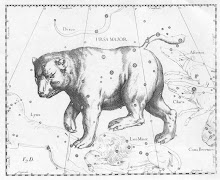There’s a lot of “standing by” and “hold” in the life of INSGC this week. Of course, in NASA environments, “stand by” and “hold” are two versions of “wait”. The launch of STS-134, with Purdue alumnus Drew Feustel, has been postponed, until at least May 16, to resolve mechanical issues. Closer to home, there are still students “standing by” to find out about potential summer internships. We’ve had several NASA centers communicating to our office hoping to place students in labs, only to find out that students have accepted other offers. Unfortunately, INSGC and the Centers are all in a period of budget holds, due to delays imposed by continuing resolutions affecting both the amount and distribution of NASA funding. (No, we still don’t know what our total INSGC budget will be for 2011-12.)
But, in the midst of all of this “stand by” status, I am very excited to note a partnership that is moving forward quickly and with enthusiasm, on the eve of a major milestone in US space history. We were just informed on Wednesday (Thursday was the 50th anniversary of Alan Shepard’s first suborbital flight) that a partnership of Indiana education partners and afterschool STEM providers has been awarded a NASA 2011 Summer of Innovation grant. The award (to the Indiana Association of United Ways in Indianapolis) will help to provide summer and school-year programs to 2500 middle school students, and training for 150 educators. I’m very excited, and pleased, and encouraged that this partnership has come together under the leadership of Sonny Kirkley’s organization, Wisdom Tools, and Debbie Zipes’ Indiana Afterschool Network, and the Indiana Youth Institute and Indiana Department of Education.
Wait, you ask. Where’s INSGC? Aren’t they the lead? And if not, why is Caldwell so happy? As I said, I am pleased that a partnership has won the Summer of Innovation grant. We’ve supported the partnership, but this time, we weren’t best placed to take the lead on the proposal. We provided funds to help the Indiana Afterschool Network with Project LIFTOFF. That’s the Indiana Space Grant’s role—to be a premiere source of coordination, information, and inspiration. I’m very glad to see these other projects move forward. There is much more out there to be done, if all of us are doing it, rather than just the INSGC office in West Lafayette doing it. Sometimes, the INSGC role is substantial, or even primary (like the Yuri’s Night 50th anniversary event at the Indiana State Museum and IMAX Theater). Sometimes, we have a contribution at the beginning of something that becomes much larger, like the National Science Foundation’s Course, Curriculum, and Laboratory Improvement grants at Purdue Calumet and Taylor. (Yes, both of those began with INSGC seed grant awards; these NSF initiatives represent a leverage of between 10 and 100 to 1 on the initial INSGC awards.)
You can never tell when a small partnership will grow into something transformative. All we can do is put in the best work we can, and stand by for further developments. By the way, don’t wait to let me know if a Space Grant project turns into something big. Trust me, the best way to ensure that we’ll keep having successful projects in the future is to let me know when prior projects develop transformative impact and success beyond the original award. It’s not always a major research grant, or an NSF initiative to transform the way students learn science, technology, engineering, or math. It might just be a couple of people. But who knows. Maybe you show up in a radio interview, or a tv program. Maybe you're quoted in the local newspaper or monthly magazine. Maybe one of those people becomes a NASA engineer or scientist or astronaut. Maybe one of them becomes a serial entrepreneur that starts major technology companies. And once again, a partnership would have led to a successful outcome.





No comments:
Post a Comment